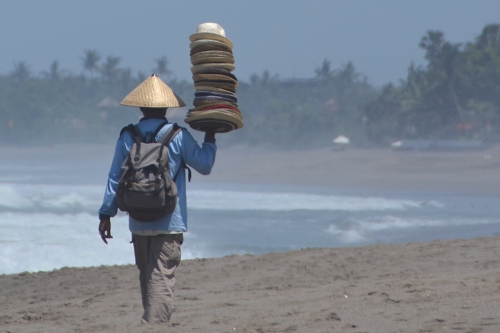
When I was out of a job in 2009, I was earning just $1,200 per month in unemployment benefits, while my monthly rent and bills added up to almost $1,000. Initially, thinking about my situation made me sick to my stomach — how was I going to subsist on just $200 per month (around $7 per day) until I got a job?
Over time, however, I adapted to my financial limitations, until living on next to nothing became natural to me. It wasn’t easy: I had to become a much better grocery shopper, a much cheaper date and much more resourceful when looking for ways to entertain myself. I quite literally had to go back to basics.
By the time I moved to China in November of the same year, I had become so comfortable in my newfound thriftiness that the rate of spending I needed to maintain to achieve my extreme savings goals — around 5 USD per day, once rent and bills were paid — seemed achievable, particularly since $5 buys way more in Shanghai than it does in Austin.
Both my income and the amount of time I spend traveling have increased over the past several years, but what has not changed is my ability to pay my “Big Three” travel expenses — lodging, food and transport — with almost nothing.
To put it bluntly, if you are not extremely mindful of your spending habits, you will not be able to travel long without going broke. Or, to spin it in a more positive way, you will have more freedom to do the things you want when you travel if you learn to control your spending habits before setting out.
When I arrived in Australia this past February, for example, it was with a low per-diem budget of $100. (I say “low” because a cup of coffee can cost $5 in Sydney or Melbourne).
In any case, I knew from the various broke periods in my life that the key to staying under my spending threshold was keeping my “Big Three” travel expenses — again, those are lodging, food and transport — as low as possible.
In Melbourne, I stayed with a friend, so lodging was free; he loved to cook a lot, so most of my meals were covered; and he lived centrally enough that I could walk most places.
During my first five days in Australia, I spent around $200, even though I had budgeted $500 for that period of time. As a result, when I realized on day 6 that my Great Ocean Road tour would cost $100.
This goes the other way, too. Say you arrive someplace and realize you need to drop several hundred dollars right off the bat.
Rather than freaking out over whether you can or should spend the money, you should instead resolve to make up for the money you spend over time.
Let’s say your big, initial travel expenditure is $300. Let’s also say you plan to stay out on the road for 30 days. Simple math tells us you just need to cut out $10 per day from your budget to make up for this expenditure — easy, right?
Well, it is easy, but only if you do the hard work of right-sizing your spending habits before you hit the road — and here’s how I suggest doing that.
The Monday after you read this article, start writing down every dollar you spend, without doing anything to adjust your normal spending habits. On Sunday night, organize your expenditures into four columns — “Food”; “Transport”; “Lodging”; “Other” — and add up the total amounts you’ve spent on each.
From the moment you wake up the next Monday morning, do your best to avoid expenditures that would fall into the “Other” column. At the same time, remain mindful of how much spend on “Big Three” expenditures. Repeat your accounting activity on Sunday, noting any differences in your spending on necessary expenditures, and how leaving out discretionary expenditures affects your bottom line.
Initially, there might not be much of a difference — you might even have spent more on food, lodging or transport, knowing that you weren’t wasting it on nonsense! But over time, if you set specific spending and savings goals, you will notice a huge drop in your spending.
This exercise also serves a secondary purpose: It helps you save money for travel. And I’m certain, if you learn to pare down your spending before you set off on wherever your next journey takes you, that money will go much farther than it otherwise would have.

Robert Schrader is a travel writer and photographer who’s been roaming the world independently since 2005, writing for publications such as “CNNGo” and “Shanghaiist” along the way. His blog, Leave Your Daily Hell, provides a mix of travel advice, destination guides and personal essays covering the more esoteric aspects of life as a traveler.







